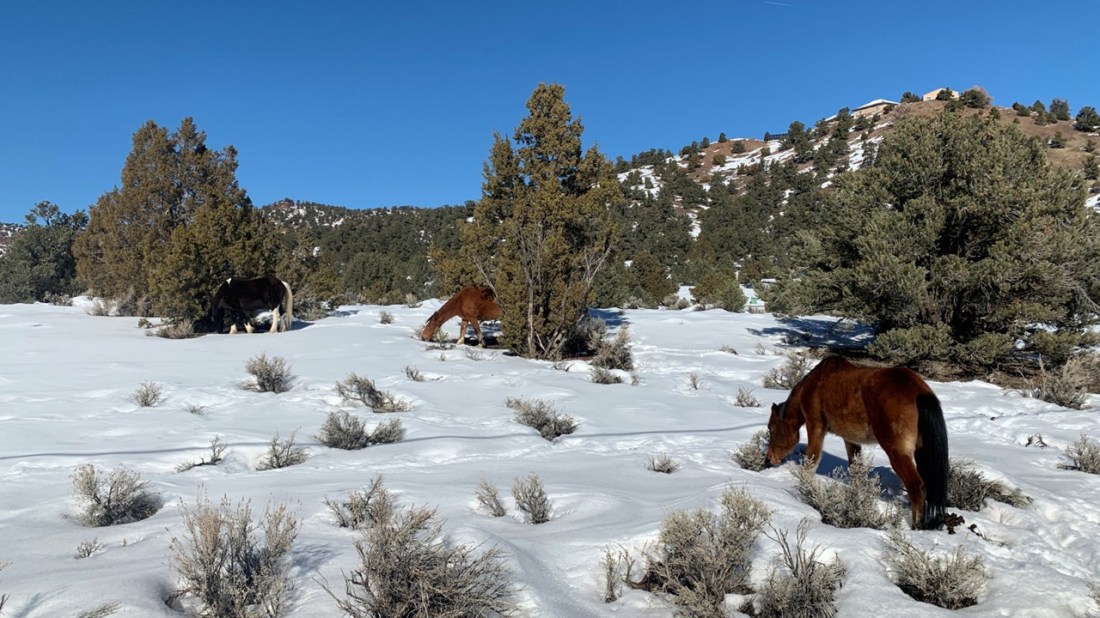The January edition of Horse Tales has been published, along with another column about wild horses by the real estate agent, PZP darter and pleader for the public-lands ranchers in the Minden/Gardnerville area.
As you read the article, which begins on page four, how many of these underlying beliefs can you identify?
- If we get rid of them, they can stay
- We’re protecting them from removal by getting rid of them with PZP
- If we don’t get rid of them, the BLM will
- We’re changing the way wild horse herds are managed, not their land
- You have to manage the numbers to fit what’s available for the horses
The writer says the reproduction rate has been reduced by over 90% and there are very few livestock competing for the range.
The majority of the acreage is in pretty good shape. The areas in poor condition are either privately owned or on BIA land.
The National Data Viewer tells a different story.
The HMA, with the orange border, is half the size of the HA, shown in black.
Almost all of the acreage is subject to permitted grazing (green).
There is no BIA land in the area identified for wild horses.
Like the Campaign Against America’s Wild Horses, the Pine Nut advocates work hard to protect ranching interests, not wild horses.
The Virgina Range, site of world’s largest darting program and magnet for dozens of nitwits, is just a few miles to the north. Click on image to open in new tab.
RELATED: Pine Nut Advocates Not Playing for Home Team.










